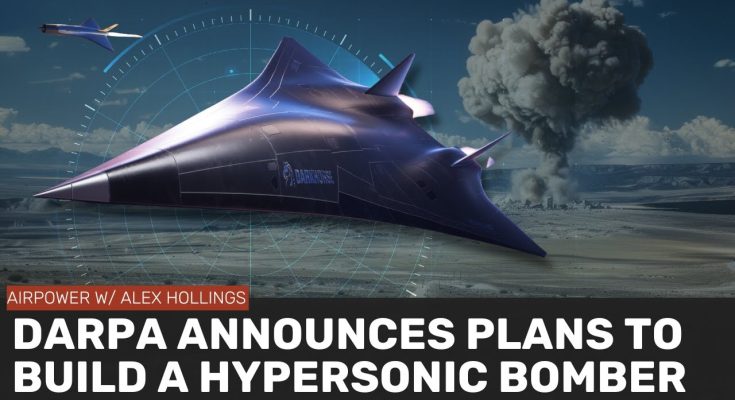DARPA, the Defense Advanced Research Projects Agency, has recently unveiled ambitious plans to develop a hypersonic bomber capable of reaching speeds greater than Mach 5 (five times the speed of sound). This marks a significant step in advancing the United States’ military capabilities, particularly in terms of rapid global reach and deterrence. The proposed bomber would be able to strike any target on Earth within a short timeframe, a major leap from traditional bombers that are limited by their speed and range.
Why a Hypersonic Bomber?
The need for a hypersonic bomber arises from the growing threats posed by near-peer adversaries like China and Russia, who are investing heavily in hypersonic technologies. In a time when speed is crucial for modern warfare, a hypersonic bomber would enable the U.S. to maintain a strategic advantage by allowing fast-response capabilities in crisis situations.
Hypersonic aircraft travel at speeds greater than Mach 5, which is essential for reducing reaction time, evading interception by advanced missile defense systems, and outpacing traditional aircraft. The bomber’s ability to operate at such extreme velocities would allow it to carry out surprise strikes and conduct rapid reconnaissance missions, potentially giving the U.S. a significant upper hand in future conflicts.
Challenges of Developing a Hypersonic Bomber
Building a bomber that can withstand the intense heat and pressure associated with hypersonic speeds is no small feat. The aircraft would need to be equipped with cutting-edge materials that can handle extreme temperatures generated by air friction at such speeds. Furthermore, propulsion systems such as scramjets, which are designed to operate at hypersonic velocities, are still in the early stages of development. These technological hurdles present significant challenges for engineers and researchers working on the project.
Thermal protection, aerodynamics, and the development of efficient hypersonic engines are some of the key technological challenges that must be overcome. DARPA’s extensive experience in high-risk, high-reward innovation, however, positions it well to tackle these obstacles.
DARPA’s Previous Hypersonic Initiatives
DARPA has a history of pioneering hypersonic technology. The Hypersonic Technology Vehicle 2 (HTV-2), developed as part of the Falcon Project, was one of the agency’s key experiments. The HTV-2 flew at speeds exceeding Mach 20 during test flights, providing valuable data on the dynamics of hypersonic flight. While the program faced setbacks, it helped inform future developments, including those for the proposed bomber.
Another key program, Hypersonic Air-breathing Weapon Concept (HAWC), demonstrates DARPA’s ongoing work on hypersonic systems. The HAWC focuses on developing air-launched hypersonic missiles, which could complement the bomber’s capabilities and provide the U.S. with both offensive and defensive options.
Strategic Implications
The development of a hypersonic bomber would fit into a broader U.S. defense strategy that emphasizes rapid global strike capabilities, particularly in areas where conventional forces may not be as effective. By integrating hypersonic technologies, the U.S. can maintain a credible deterrent against adversaries while ensuring that it can project power rapidly and effectively across the globe.
While the project remains in the early stages, its potential to revolutionize military strategy and reshape how the U.S. approaches defense operations is undeniable. As DARPA continues to push the boundaries of technological innovation, the world watches closely to see how this ambitious vision takes shape.
In conclusion, while a hypersonic bomber poses a range of technical challenges, the benefits it offers in terms of speed, surprise, and strategic flexibility make it a vital addition to future defense planning.



